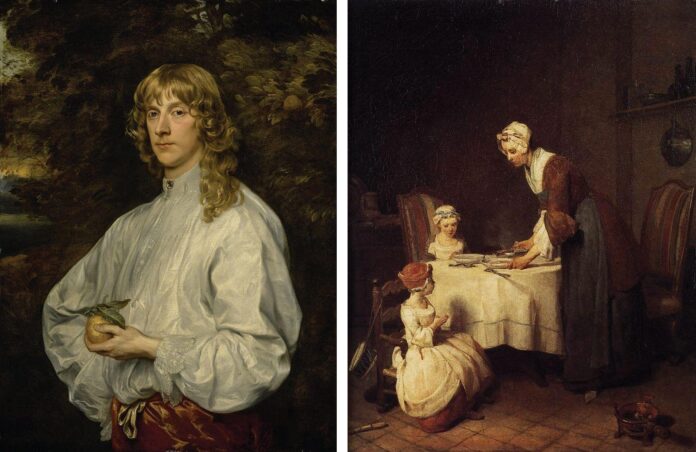The problem of fakes and forgeries is as old as the art market itself. With potential pitfalls at every turn, museums need to keep alert to the risks when acquiring new works for their collections.
From Caravaggio to Albrecht Dürer to contemporary artists like Peter Doig, the art world is littered with misattribution claims of one form or another. Many collectors, dealers, gallerist and museum directors have been duped by the lure of an illustrious attribution which ultimately proves too good to be true.
For museums contemplating what to acquire for their collections, understanding the law around this issue is key. Much can be gleaned from the (rare) legal cases in this area, where judges have grappled with tricky questions of authenticity. The evidence in these cases generally falls into three categories: art historical material, provenance documentation and technical or scientific data.
Most authenticity cases deal with fine art, where “connoisseurship” has been highly persuasive. In a 2002 High Court case regarding a fake Anthony Van Dyck painting sold to a Texan collector called Richard Drake, the judge spoke of an expert’s ability to recognise an artist’s “handwriting”, which carried significant weight in the decision-making.
For antiquities, the focus can be different and other factors carry greater weight, most notably the archaeological record and historical or religious background of the object in question.
Provenance, appearance and condition are obviously crucial in any due diligence exercise. For any museum employee involved in acquiring a work, it is vital to request the provenance documents typically provided, if not offered up voluntarily, to scrutinise them and to corroborate them wherever possible. If unusual features of appearance or condition raise red flags, these should be investigated. The immaculate condition—and the mere survival—of certain objects should raise alarm bells. This is especially the case in a particular market which is widely understood to be flooded with fakes like, for example, markets for collectors who seek certain types of specific antiquities. Examples like this highlight how crucial it is for museums to understand market issues.

Amanda Feilding, the Countess of Wemyss, sold her Chardin through the dealer Simon Dickinson for £1.15m in 2014; months later it was resold for £6.9m
Photo: Luke MacGregor/Bloomberg via Getty Images
Dealers’ conduct under scrutiny
Despite the rarity of court judgments in this area, in late 2022 two English High Court decisions on authenticity were handed down within the space of a few days. Qatar Investment & Projects Development Holding Co v Eskenazi Ltd related to the purchase of objects described (in most cases) as antiquities from around the first to seventh centuries from the Gandharan and Bactrian regions in present-day Pakistan and Afghanistan, while Feilding v Dickinson Ltd involved the sale of a Jean-Baptiste-Siméon Chardin painting, Le Bénédicité.
Both cases focused on the standards expected of dealers with a professional standing and a long history of transacting in art. The courts scrutinised the level of information shared with clients and the need for expert advice. In the latter case, the dealer met the required standards, but, in the former, the dealer’s conduct was found wanting. Both verdicts provide guidance for museums contemplating how to acquire an antiquity or work of fine art.
The key issues in Qatar Investment Co v Eskenazi centred around lack of provenance and insufficient investigation into the context of the contested objects. In Feilding v Dickinson, the question was about the attribution to Chardin, and the exact nature of an autograph work versus one that could not be fully attributed to the artist. The painting was described in the catalogue raisonné as a copie retouchée—a phrase for which the court conceded there was “no consensus as to the meaning or significance” (but indicated that this could mean a copy which Chardin had allowed to be made and had then “touched up” himself). This rather nebulous description, coupled with the known artistic practices of the time, resulted in many uncertainties lying at the heart of the case.
The precise wording of an attribution and any related scholarly commentary require the fullest attention by a museum’s acquisitions team. A brief survey of auction house terms and conditions will reveal a plethora of attribution descriptions from a single named artist, to terms such as “circle of” or “manner of” with accompanying definitions. Much hangs on these descriptions, including the scope of any authenticity guarantee. Understanding exactly what they signify and how far they extend, especially for institutional buyers, is crucial.
The key takeaway is that there is no substitute for systematic, assiduous and painstaking research when contemplating acquisitions. It pays to read the small print and challenge opaque assurances or evasive responses. Reliance on documents taken at face value, on assumed expertise and on uncorroborated provenance is a risky business. For public institutions, these obligations are more pertinent, given the exacting ethical standards to which they are held. The lessons from these recent cases are a reminder that vigilance is critical.
• The Institute of Art & Law, in partnership with Stephenson Harwood LLP, will be hosting a seminar, Authenticity, Attribution and the Law, in London on 28 March.

























